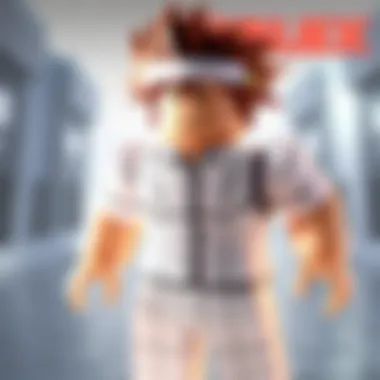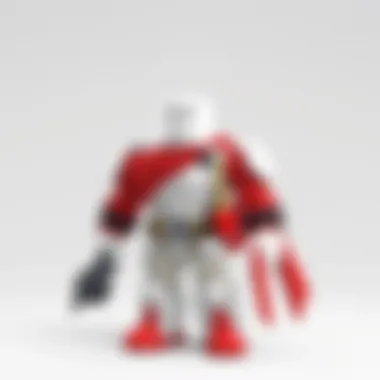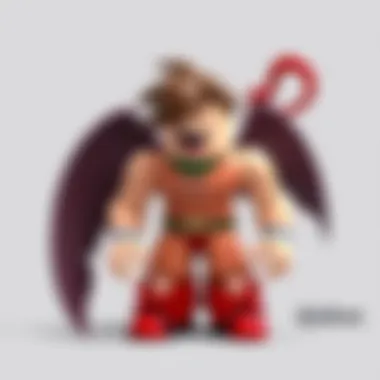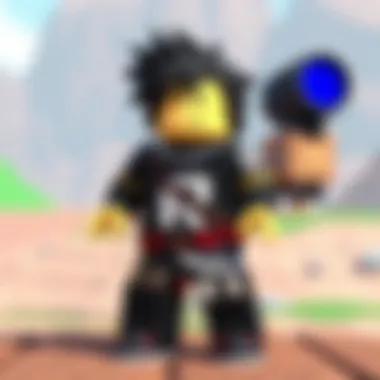Mastering the Roblox Game Publishing Process


Intro
Publishing a video game today takes more than just a good idea and some coding skills. In the vibrant world of Roblox, where millions of players gather to create, share, and experience games, knowing the ins and outs of the platform is crucial. Most people know it as a place for fun, but it’s also a playground for aspiring game developers. Whether you're a newbie or a seasoned creator, understanding how to navigate Roblox's unique ecosystem can be a game changer. The journey to publishing your first (or next) game involves various steps, from design and development all the way to community engagement and monetization.
In this guide, we are going to unpack everything you need to know to successfully publish your game on Roblox. We will start by diving into gameplay tips relevant to both creators and players. You would want to ensure your game is enjoyable and engaging for your audience. Next, user-generated content will be brought front and center, as it represents a significant aspect of Roblox's identity. We will explore tips for crafting games that capture attention and highlight some of the standout creations from the community.
With actionable insights combined with expert advice, this guide aims to equip you with the necessary tools to maximize your game's reach and success. Let's dive in.
Prelude to Roblox Game Publishing
In the realm of gaming, Roblox stands out, not just as a platform for gamers, but as a vibrant universe for budding creators. Understanding the process of publishing on Roblox is crucial for anyone wanting to make their mark. Why? Because this step is not merely about uploading a finished product; it shapes the entire journey of a game, potentially affecting its reception and viability in the competitive marketplace.
When you take the plunge into publishing your game, you're entering a bustling community teeming with creativity. Every decision you make in this phase can influence your game's visibility and success. It's a tightly-knit ecosystem where players are not just consumers, but creators in their own right. This intricate web of interactions requires developers to think not only about game mechanics but also about community engagement and monetization strategies.
There are several key elements to consider in this launch phase:
- Platform-Specific Guidelines: Roblox has specific rules and requirements that developers must adhere to. Missteps here can lead to disqualification or penalties.
- User Engagement: Once your game is live, maintaining player interest is essential. This could involve regular updates or in-game events that draw players back in.
- Feedback Mechanisms: Engaging with your user base through surveys or direct feedback can lead to informed updates and enhancements.
Publishing your game is not the end of the road; it begins a new chapter of interaction, growth, and continuous improvement.
It's vital to keep yourself informed about trends and changes within the Roblox landscape. Developing a game is one thing; getting it noticed and played is another challenge entirely. By understanding the ins and outs of the Roblox publishing process, developers can turn their creative visions into successful realities, resonating with players of all ages. With millions of games in the library, standing out requires both creativity and strategy, making the knowledge gained during this stage invaluable.
In summary, the introduction to Roblox game publishing is more than just a preliminary step—it's a roadmap for success that encompasses planning, community interaction, and long-term strategy. By approaching this task with thorough understanding and preparation, you lay the groundwork for a game that has the potential to thrive in the expansive and engaging world of Roblox.
Understanding the Basics of Roblox
Before embarking on the thrilling journey of publishing your game on Roblox, it’s vital to grasp the essential aspects of the platform. A solid understanding of Roblox paves the way for successful game design and ensures you’re not just another fish in the sea. The environment is unique, blending creativity and coding, making it a paradise for aspiring developers. This section highlights key elements about Roblox that can’t be overlooked.
Overview of the Roblox Platform


Roblox is more than just a game; it’s a platform where creativity knows no bounds. Players of all ages dive into a vast ocean of games, each one crafted by individuals like you. With its distinctive blend of social networking and game development, Roblox transcends traditional gaming. Here, creatives can tap into the minds of millions, sharing their creations and gathering feedback.
The platform features:
- User-Generated Games: At its core, Roblox relies on its community to generate content, leading to a diverse array of experiences.
- Cross-Platform Play: Whether on a PC, tablet, or console, gamers can access their favorite titles, elevating user engagement.
- Roblox Studio: This powerful development tool equips creators with the resources to bring their visions to life with relative ease.
Working on Roblox means you're in for a rollercoaster ride where every turn can lead to inventive outcomes.
Significance of User-Generated Content
The heart of Roblox's appeal lies in its robust system of user-generated content (UGC). Not only does this model fuel limitless creativity, but it also fosters a sense of community. Fans of the platform often stick around not just to play—many want to create and share their own experiences. This participatory culture sets Roblox apart in the gaming landscape.
- Empowerment: Developers are empowered to express their imagination freely. They can create quests, worlds, and characters that reflect their unique ideas. This intrinsic motivation has led to some of the platform's most beloved games.
- Community Building: Engaging with players and fellow developers helps build a loyal fan base. As creators share their work, they receive real-time feedback, enhancing the collaborative spirit.
- Monetization Opportunities: Game creators can monetize their work through in-game purchases or game passes, allowing them to potentially earn while doing what they love.
User-generated content transforms not just the creator but also the player’s experience, making every interaction meaningful.
In essence, understanding Roblox’s unique platform and its focus on user-generated content gives you a significant edge. Armed with this knowledge, you're well on your way to navigating the essential phases of game publishing, ensuring you capture the hearts of players and resonate within the vibrant Roblox community.
Preparing for Game Development
Before you jump into the deep end of developing your game on Roblox, it's crucial to prepare effectively. Think of preparing for game development as laying down the tracks before a train can run smoothly. If you don’t have a solid foundation, you might find yourself derailed further down the track. This stage is about crafting a vision that is informed, strategic, and aligned with the expectations of the Roblox community, as it sets the tone for your entire project.
Identifying Your Target Audience
Knowing who your audience is might just be the cornerstone of a successful game. If you can pinpoint who will be playing your game, you can tailor your design to meet their desires and preferences. Roblox caters to a vast demographic, from young kids to teenagers and even adults, so narrowing down your target audience is key.
Ask yourself:
- What age group am I aiming for?
- What interests do they have?
- What games do they typically play?


For instance, if you're developing a game geared towards younger players, you might want to include colorful graphics, simple mechanics, and engaging tutorials. On the contrary, if you aim for an older audience, you might opt for deeper mechanics, strategy elements, or even role-playing aspects.
Using tools like social media groups and forums can provide insights into player preferences. Sites like reddit.com have communities that discuss various Roblox games and can offer helpful feedback.
"The difference between a good game and a great game often lies in understanding who your players are."
Choosing the Genre of Your Game
After you have a clear vision of your target audience, the next step is to select a game genre that fits that demographic. This choice can significantly affect everything from gameplay mechanics to marketing your game. Roblox supports a plethora of genres, including adventure, simulation, role-playing, and obstacle courses, each offering a different kind of experience.
Here are some common genres you might consider:
- Adventure: Engage players in exploration and quests.
- Role-Playing Games (RPGs): Allow players to create characters and embark on epic stories.
- Obstacle Courses (Obbys): Simple yet challenging, good for short play sessions.
- Simulation Games: Enable players to create their world, often incorporating building mechanics.
Choosing the right genre not only helps in drawing in your target audience but also sets the expectations for gameplay. Remember, once you select a genre, it’s important to innovate within that space. Look at successful games in your chosen category and analyze what made them popular; this can provide a roadmap for what resonates with players.
Game Design Fundamentals
Game design is the backbone of any successful game on Roblox. An engaging and well-thought-out design can transform a simple idea into an interactive masterpiece. The game design fundamentals focus on three key areas: developing captivating concepts, designing immersive levels and mechanics, and creating visually appealing characters and assets.
Developing an Engaging Game Concept
The first step in the game design process is to brainstorm a concept that piques interest. A good game concept serves as the foundation for everything that follows. What sets your game apart from the countless others on Roblox? Think about a unique storyline or gameplay mechanic that can draw players in. For example, consider creating a game where players solve puzzles using physics-based movements. This can lead to unexpected outcomes, engaging the player’s curiosity and encouraging them to explore further.
You should also consider the target audience here. If your game appeals to younger audiences, you might want to incorporate colorful visuals and friendly characters. Alternatively, if you’re aiming at older audiences, themes with deeper narratives might capture their interest better. Utilize Roblox’s analytics tools to gauge what players enjoy and shape your concept accordingly.
Level Design and Mechanics
Once you have a solid concept, it’s time to focus on designing levels and mechanics that are both intuitive and challenging. Each level should be a progression of difficulty, offering players a sense of achievement as they advance. Think of level design like building a staircase: each step should take players higher, but not so high that they can’t reach it.


Core Mechanics are equally critical. They dictate how players interact with your game—what they can do and how they engage with the environment. For instance, including a jumping mechanic can enhance exploration in platformers, while complex combat mechanics can create depth in action games. Moreover, clever use of Lua scripting in Roblox Studio can boost your game’s functionality, making it more engaging and dynamic.
"Great game mechanics keep players coming back, while poorly implemented ones can send them packing. Invest time into refining this aspect."
Character and Asset Creation
Visual appeal matters, especially in a platform where creativity thrives. Characters and assets represent the game's identity and can greatly influence player retention. Invest effort into character design—what makes your characters relatable or aspirational? Whether it’s quirky outfits or interesting backstories, characters should resonate with players.
Similarly, asset creation involves crafting every detail, from the environment to items players can use. Using Roblox Studio’s tools effectively allows you to create varied terrains and interactive objects. This richness in visual appeal captivates the audience's attention and enhances the overall gaming experience.
Remember to strike a balance between quality and performance; overly complex models can lead to lag, disappointing players.
Utilizing Roblox Studio
Roblox Studio serves as the cornerstone for game development within the Roblox ecosystem. It's not just a tool; it’s a world in itself where creativity meets technology. Understanding how to effectively navigate and utilize Roblox Studio can drastically influence the quality of your game. New developers, as well as seasoned creators, should recognize its vital role in crafting engaging experiences for players.
Navigating the Interface
For many developers, the first challenge lies in getting accustomed to the interface. Navigating Roblox Studio can initially appear daunting, but once you know your way around, it becomes second nature. The workspace usually includes panels like the Explorer and the Properties window. The Explorer panel is your go-to for managing the hierarchy of objects in your game. It lets you access everything from models to scripts.
"Your workspace is where the magic happens. Get comfy with the layout!"
To make the most out of your navigation, familiarize yourself with shortcuts. For instance, pressing [F5] allows you to test your game, while [Ctrl+Z] will undo any mistakes. The toolbar at the top provides essential functions like inserting parts, creating scripts, and manipulating game elements efficiently.
Besides that, recognizing how different panels interact with each other will speed up your workflow. Want to change a part's color? Just select it in the Explorer, adjust properties in the Properties panel, and voilà, changes made in a blink.
Scripting Basics with Lua
At the heart of Roblox Studio is Lua, the scripting language that gives life to your game. Lua is relatively easy to grasp for beginners, making it a practical choice for budding developers. You can create scripts to add functionality like player movement, game mechanics, and interactive objects.
Starting with simple scripts can help build confidence. A basic script to change the color of a block might look something like this:
lua local part = game.Workspace.Part part.BrickColor = BrickColor.new("Bright red")







